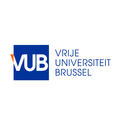In short
Endocrine disruptors are substances which affect the hormonal system and consequently causes adverse health effects in an intact organism, or its progeny, or (sub)populations. These endocrine disruptors can affect various functions of the body. This project focuses on the effects on the sexual and reproductive function caused by the endocrine disruptors which can be found in highly consumed food, certain food supplements and in food contact materials (transferred to food).
Project description
Natural or synthetic compounds used in a wide variety of applications are suspected to be endocrine disruptors but current scientific evidence of their real toxicological activity, the levels of these activities and the extent of food contamination are missing for almost-total of them. We propose in this project to set up a methodology to prioritise potential endocrine disruptors to be monitored.
In practice, we will draw up a list of substances whose (anti-) oestro/androgenic activity must be evaluated and will study these properties according to an in vitro test of proven gene expression, the CALUX (Chemically Activated LUciferase gene eXpression) test. This test is based on the activation of a hormone-dependent receptor by substances acting on the endocrine system, followed by the activation and transcription of a reporter gene coding for the luciferase enzyme.
We will aim for a minimum of 30 compounds, particularly of the phytopharmaceutical products type, substances that can be added in materials in contact with food, as well as phytoestrogens. A second part of the study will be the detection and quantification of targeted EDs in relevant or highly consumed food matrices and in food contact materials. To this end, migration studies will be carried out and GC or LC-MS/MS analysis methods will be developed (or transferred) and validated before the analysis of real samples (around 300 food products and 50 cooking utensils). The impacts of the actual domestic use of kitchen utensils on transfer rates will also be studied (heating, cooking, washing, detergent, abrasion …).
Finally, the analytical data generated during the analyses of foods and materials in contact with them will be combined with the real consumption data of the Belgian population (VCP-ENCA 2014) in order to evaluate the exposure to these substances of the Belgian population, and mainly in groups at risk (children, adolescents, vegetarians …). The combination of these three types of data (toxicological, food concentrations and dietary exposure) will provide evidence to prioritise suspicious EDs. The strategy developed could be subsequently applied to other dietary compounds and matrices.
Sciensano's project investigator(s):
Service(s) working on this project
Partners




